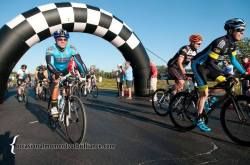A hot environment is one of the most severe stresses an athlete can endure. Just like a car, you need water to cool your engine. When you exercise, muscle contractions cause heat. Every machine needs energy to produce work and that energy produces heat. Even in the best man-made machine, only about 20% to 25% of the energy goes to work, while 75% goes to heat. Without enough water, the heat produced by activity in hot weather puts you at risk for injury. Your organs and the chemical reactions within your body work only within a precise range of temperature and acidity. If you go outside this ideal range, you become hypothermic (too cold) or hyperthermic (too hot). An increase in core temperature can cause cardiac problems, for example. Thus, keeping a constant temperature is a high priority for your body.
To keep up with fluid losses and manage heat:
- Plan for frequent fluid breaks during exercise
- Avoid caffeinated, alcoholic and carbonated beverages, which can enhance dehydration or result in less fluid consumed
- Replenish your electrolytes, in particular sodium, to avoid hyponatremia (overhydration) during training and to optimize fluid retention after</UL>
In addition:
- Check your weight before exercise
- Drink a couple of glasses of water before exercise
- Drink another eight to twelve ounces every fifteen to twenty minutes (one-half to one liter per hour) in hot weather
- For very long-lasting activity, drink a little less (to avoid hyponatremia over the course of time)
- Two or three hours after the start of exercise, recheck your weight and try to recover whatever weight you have lost in water; remember the old cooking adage: "A pint's a pound the whole world 'round"--so for every pound you lost during exercise, replace it by drinking a pint of water

